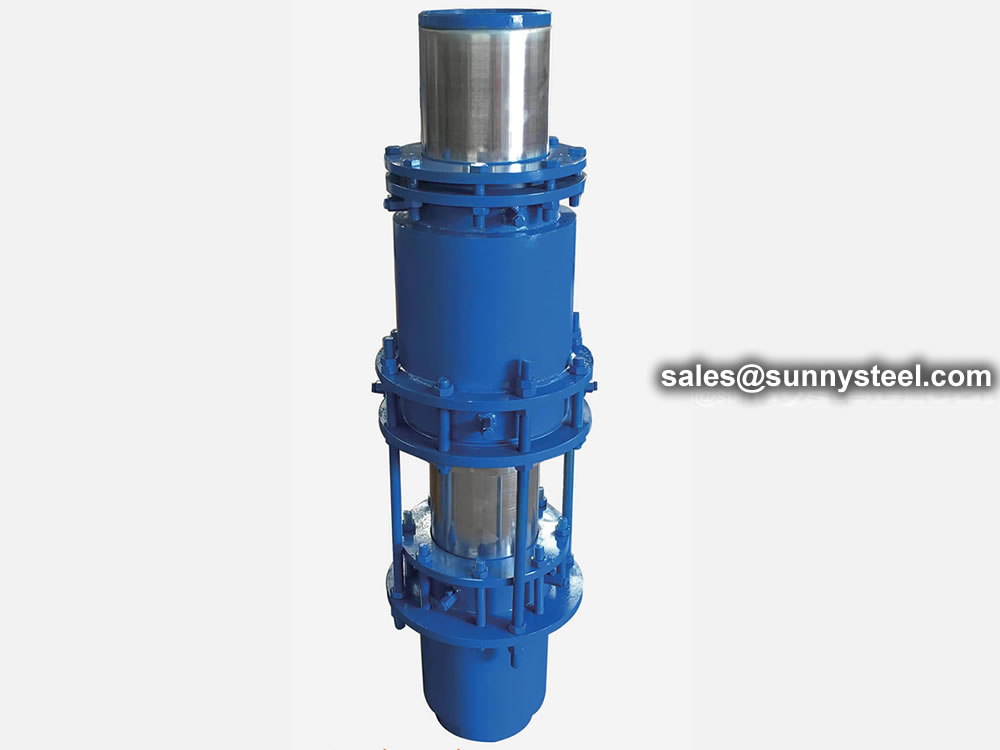
A non-thrust sleeve compensator is a type of expansion joint used in piping systems to accommodate thermal expansion and contraction without generating axial thrust forces.
A non-thrust sleeve compensator is designed to absorb axial movement caused by thermal expansion and contraction in a piping system without generating significant thrust forces. It typically consists of a flexible sleeve or corrugated pipe that allows for movement while maintaining the integrity of the system.
Download PDFIt is mainly used for axial thermal expansion displacement absorption compensation after linear pipeline auxiliary installation. It is suitable for hot water, steam, oil and oil medium, and the slip movement of the sleeve through the sliding sleeve can achieve the compensation of thermal expansion.
Sleeve compensator suitable medium engineering pressure less than 2.5MPa, the medium temperature of -40 -600 deg.
The sleeve compensator adopts the new sealing material, flexible graphite ring, which has the characteristics of high strength, small friction coefficient (0.04-0.10), no aging, good effect and convenient maintenance.
The service life of the sleeve compensator is large, and the fatigue life is equal to that of the pipe. The corrosion resistance of sliding surface is better than that of austenitic stainless steel, which is more than 50 times higher than austenitic stainless steel in saltwater and salt solution. At the same time, many years later, because of the weakening of the sealing effect due to wear, it can re fasten the flange and enhance the sealing performance. It can also release the bolts, remove the pressure ring, then install one or two layers of seal rings, compress the pressure ring, and continue to use.
The sleeve compensator is not required for the content of chlorine ion, and is especially suitable for the system of superstandard chlorine ion in the medium or the surrounding environment.
The sleeve compensator is divided into one way and two way compensation structure. The two-way characteristic is whether the sliding sleeve on both ends of the compensator is always sliding freely, no matter where the medium flows from the end of the compensator, so as to achieve two-way compensation and increase the compensation amount.
The directly buried sleeve type compensator can be buried directly in the underground, and the maintenance well can not be set up when the installation is installed, and the cost of the project is low.
The sleeve compensator should be properly kept before installation to prevent the sun and rain and dust pollution.
When installing, check whether the specifications and design of the compensator are consistent with the design. There should be no impact on the product surface, such as bruise, pressing pits, serious rust, and other factors that affect the quality of products.
When the total length of the disposable compensator is identical with the sample, it is not necessary to stretch or compress again. For example, when the installation mark changes on the telescopic main pipe, it should be adjusted before installing.
The two-way non thrust compensator must be installed according to the medium injected in the sketch. When the medium is steam, the compensator will not form the gas plug. In order to ensure the equal compensation of the compensator in two directions, the two-way compensator must be arranged in the middle of the two fixed points in the design.
The pipe segments welded with the two ends of the compensator must be treated by grooves. After welding, water pressure test is required according to the requirements. When the test pressure is to be tightened, the bolts at both ends of the packing chamber must be tightened without leakage. After running for 24 hours, the bolts on both ends of the packing chamber must be tightened again.
In order to ensure that the pipe has no lateral displacement, only along the axial expansion, the guide support is installed on the side of the telescopic pipe. When both sides of the compensator have axial position, the guide support should be installed on both sides to ensure that the axial displacement is positive and negative to the eccentricity of the compensator (+) not more than 1 degrees.
The heat preservation and waterproof structure of the compensator is the same as that of the pipe, but it can not be binding on the expansion section.
The compensator has the amount of 60mm, can be installed according to the maximum installation length Lmax, without the need to pull or pressure. Other special circumstances to negotiate.
Non-thrust sleeve compensators are used in various industries and applications where axial movement needs to be accommodated without generating thrust forces. They are commonly employed in pipelines for fluids such as steam, hot water, and other non-thrust-sensitive applications.
